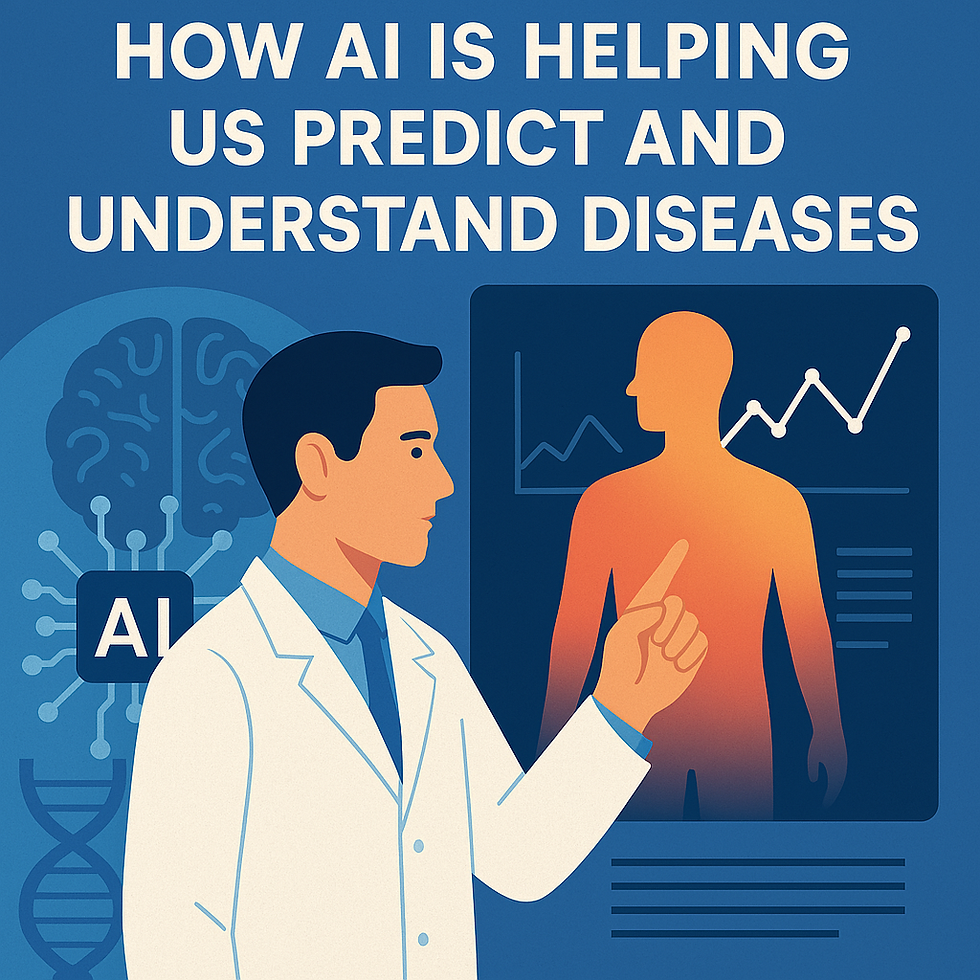How AI is Helping Us Predict and Understand Diseases
- Tyson Valle
- Feb 12
- 2 min read

When people get sick, doctors usually rely on their expertise and medical tests to decide how to treat them. But what if we could use computers to analyze giant datasets—patient histories, lab tests, genetic profiles—to predict how the disease will progress and what treatments will work best? That’s exactly what AI-driven disease modeling is all about.
One big area is disease progression prediction. Take Alzheimer’s disease, for example. Researchers can train AI algorithms on brain scans and clinical records from many Alzheimer’s patients over several years. From that, the AI learns to predict which new patients are at higher risk of rapid decline and who might stay stable longer. This helps doctors tailor interventions to each patient’s likely future.
In cancer care, AI tools can combine tumor scans, genetic mutations, and gene expression data to guess how aggressive a tumor might be. These predictions often come in the form of risk scores, which help clinicians decide who needs more immediate or aggressive treatment.
AI is also the force behind personalized therapy recommendations. For instance, a model might look at a leukemia patient’s gene profile and predict which chemotherapy regimen has the highest chance of success. By analyzing thousands of patient records, the AI spots patterns that link certain genetic changes to better responses. This approach saves time and spares patients from going through ineffective treatments.
Then there’s the concept of digital twins—a digital copy of a patient’s body that can be simulated. Imagine feeding all your health data, from wearable devices to blood tests, into an AI system that builds a virtual version of you. Doctors could try out different treatments on the digital twin first and see how you might respond, reducing trial-and-error in the real world. While still in early stages, digital twins could one day revolutionize personalized medicine.
Outside the hospital, AI models are used by epidemiologists to predict how diseases spread through populations. During the COVID-19 pandemic, machine learning tools analyzed travel and social data to forecast case surges, helping health authorities decide on lockdowns or vaccination strategies. That’s disease modeling on a bigger scale, protecting entire communities.
What ties all of these approaches together is data. We have more health data than ever—electronic health records, lab results, imaging, genomic tests—and AI is really good at identifying patterns within that data. It can pick up on subtle clues that humans might miss.
Still, AI-driven disease modeling has hurdles to overcome, like ensuring data quality, addressing potential biases, and protecting patient privacy. But the benefits are already clear: more accurate diagnoses, better-tailored treatments, and improved prevention strategies. If we do it right, AI could help us take a giant leap toward a more predictive and personalized era of healthcare.




Comments